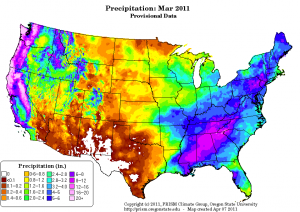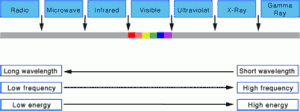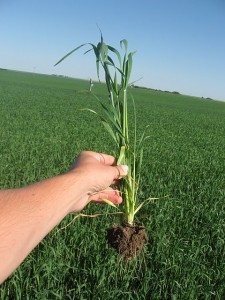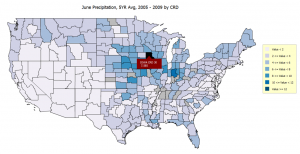GDA Corporation Introduces CropSignalTM; Redefines Agricultural Intelligence Market
CropSignal redefines Agricultural Intelligence delivery and analysis capabilities with a cloud based on-demand database management, analysis and visualization platform
June 28th, 2011 – Geospatial Data Analysis Corporation (GDA), a leader in satellite-based agricultural and environmental intelligence gathering and distribution, announced today the introduction of CropSignal, www.CropSignal.com. CropSignal is an Agricultural Intelligence on-demand platform that empowers users with unprecedented access to the latest in public sources of agricultural intelligence data, ranging from crop statistics to weather to supply and demand, as well as a range of analytical and visualization tools to make the most of the vast stores of data.
Commodity trading, farm operations, logistics planning, resource management and agriculture enterprise companies are always looking for an edge, relating to the latest agricultural intelligence available, to assist them in making complex decisions every day. The only solutions available to date are public sources that lack the timeliness and ease of use required and private sources that are high cost and allow little to no analysis or custom visualization capabilities.
CropSignal changes the dynamic of the market place by offering the ultimate in user flexibility in the manipulation, analysis and report generation of intelligence data, all in a cost effective on-demand platform. User subscriptions start as low as $79 per user per month and CropSignal is available to any user with an internet connection and a browser. No software downloads are required allowing for true 24/7 access anywhere in the world.
“We have a great deal of experience in agricultural intelligence data and the operational delivery of that intelligence to several US government agencies,” said Stephanie Hulina, CEO of GDA Corporation. “We felt what was available in the private sector lacked the flexibility and tools required to truly allow people to couple their expertise with the available information. We believe providing this will create real and quantifiable advancement in the use and value of agricultural intelligence.”
CropSignal combines data from multiple public sources, including various agencies within the USDA. Enterprise customers, through the customizable Enterprise subscription level, have additional data capabilities such as importing their own datasets as well as accessing GDA’s satellite image-based proprietary crop intelligence services.
With CropSignal, users can simply monitor a catalog of standard reports and executive dashboards (whose results are continuously refreshed when new data is available) or dive into a full blown analysis by accessing the raw data and a simple to use library of analysis and visualization tools, including interactive charts and maps. Providing users with data collection and database management services along with a full range of analysis capabilities demonstrates one of the true powers of CropSignal.
Availability
CropSignal is available today by visiting http://www.CropSignal.com
About GDA Corporation
Geospatial Data Analysis Corporation (GDA) is a recognized leader in agricultural intelligence and a leading solutions provider to the USDA and other federal and state government agencies. GDA specializes in the analysis of satellite imagery and, in particular, the automated pre-processing, data extraction, analysis and operational delivery of intelligence products for the agricultural, environmental and resource management arenas. GDA is built on the principle that the use of advanced science and technology can have a profound impact on the world in which we live.
To learn more about GDA please visit our corporate website at www.gdacorp.com.
 Want to know what new features are coming to CropSignal? Interested in weighing in with your opinion and expertise? Want to influence how new features work and what new content is made available?
Want to know what new features are coming to CropSignal? Interested in weighing in with your opinion and expertise? Want to influence how new features work and what new content is made available?
 Follow
Follow



